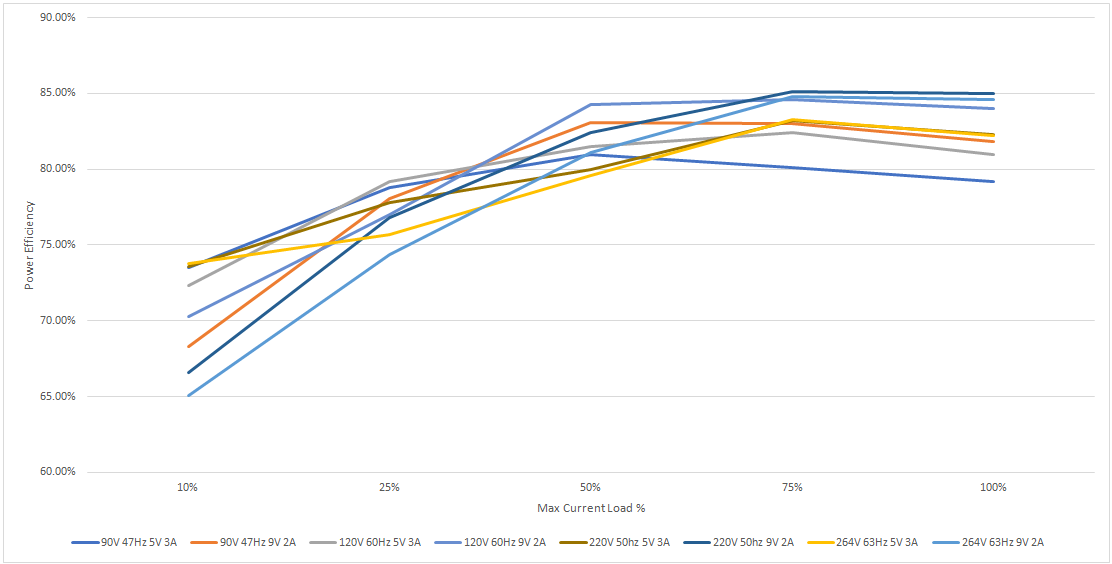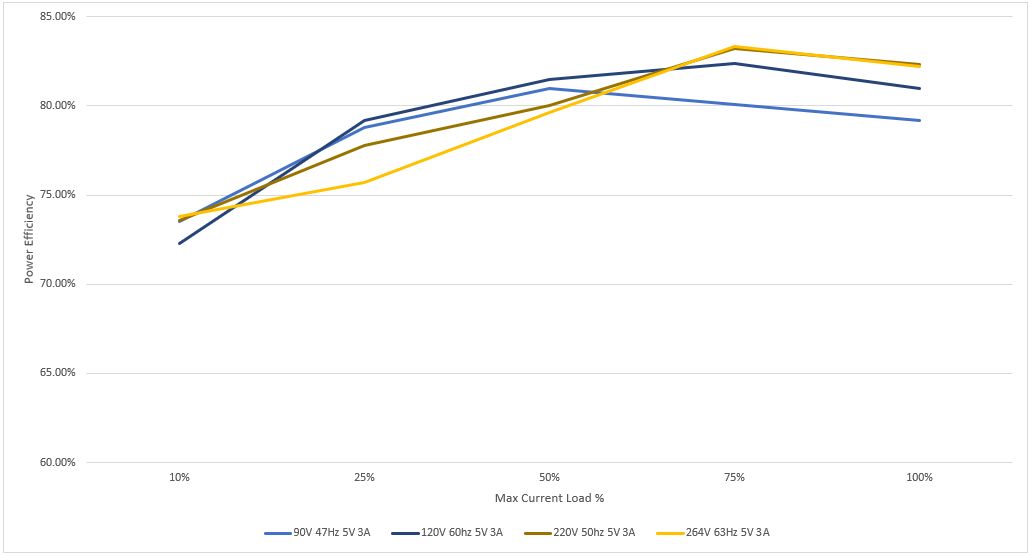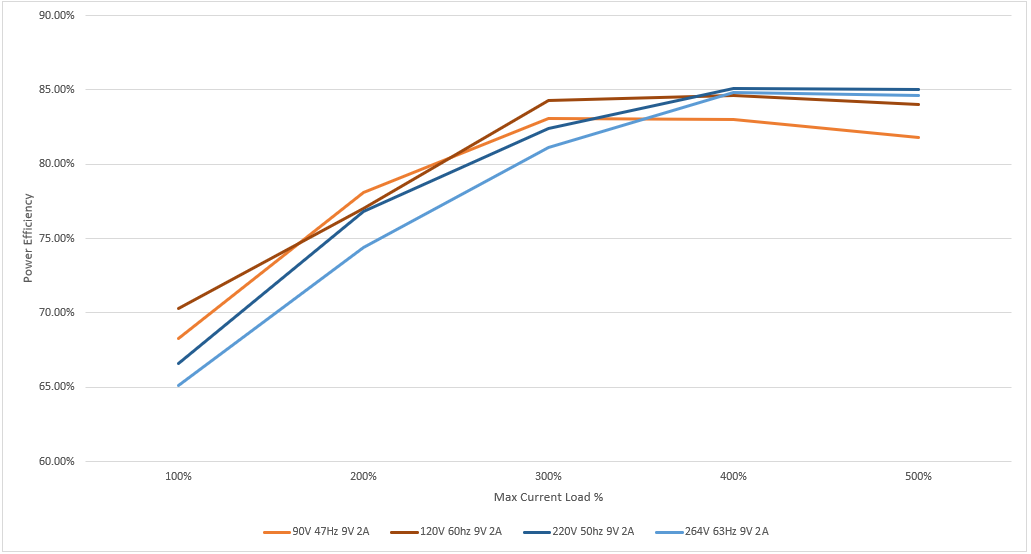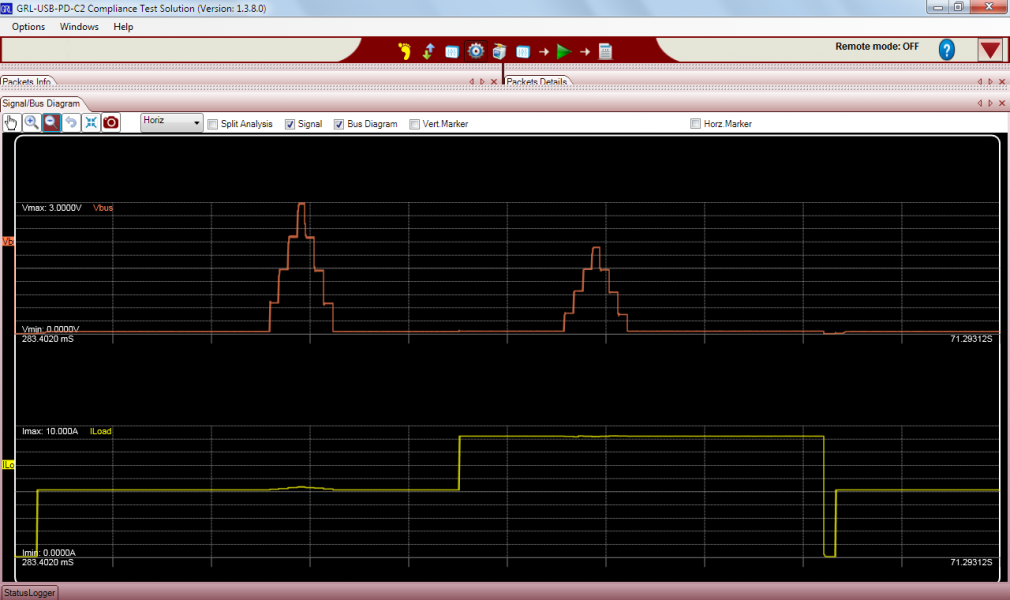2
High Trust ProductsCharging Technology Speed Performance Benchmarking
Chargers and Power Banks
Headphone & Speakers
Cases & Covers
Virtual Reality
Cables & Adapters
Media Player
Laptop
Tablet
Desktop
Cell Phone
Printers & Copiers
Memory Cards
TV
Computer Display
Game Console
Smart Home
Wearable Technology
Photo & Video Camera
Car Electronics
Car
Networking Equipment
Smart Toys
Home Audio & Video
Professional & Industrial
Storage Drive
Docking Station
Game Console Controllers
Set-top box
Keyboard, Mice, & Stylus
Portable Music Player
Computer Parts & Components
Cordless & Speakerphones
Projector
Software
Reporting
18W PD Charger with Pixel 3
by Google Inc.






Select a product category to see which devices type we recommend to use with the 18W PD Charger with Pixel 3:

What's Inside the USB Power Delivery Profile of the Google Pixel 3 XL's 18W USB-C Power Adapter

The 18W USB-C Power Adapter ships with the Google Pixel 3 XL and supports the common USB Power Delivery profiles of 15 watts (5 volts @ 3 amps) and 18 watts (9 volts @ 2 amps). Note this 18W charger is different from the original charger shipped with the original Google Pixel (seen in this review) and the Google Pixel 2 XL (this review) although still supports the same power profiles.
Using the USB Power Test App from Granite River Labs with the Granite River Labs USB Power Delivery Compliance C2 Tester, we ran a subset of power tests for the Google 18W USB-C Power Adapter to generate the following test results.
The USB Power Test App first negotiates a power contract for every PDO supported by the Google 18W USB-C Power Adapter, and increases the load gradually to find the threshold where over current protection (OCP) kicks in and voltage and current start to drop for safety reasons.
The USB Power Test App reports out all the PDO's supported by the Google charger and their OCP thresholds. OCP thresholds for the Google charger are set at about 10-15% above the maximum current levels for the fixed PDO's.
| PDO | OCP (A) |
|---|---|
| PDO#1 Fixed: 5V 3A | 3.28 |
| PDO#2 Fixed: 9V 2A | 2.31 |
The USB Power Test App from Granite River Labs also produces an I-V curve which graphically shows the relationship between voltage and current for each PDO. We can observe as the current increases beyond the OCP threshold, the voltage immediately shuts off.
The USB Power Test App can also use the Granite River Labs USB Power Delivery Compliance C2 Tester integrated with the GW Instek APS-7100 programmable AC power supply to compare the charger's power output vs power input so that power efficiency can be measured and compared to regulatory limits from United States of Energy (DOE) Level VI or European Union's CoC Tier 2 requirements. We can repeat the power efficiency tests for different PDO's, current load conditions, and different AC input ranges, allowing us to get a complete picture of power efficiency ranges across all different usage scenarios.



Using the USB Power Test App and FLIR thermal imaging tools, we measured the heat emitted by the Google charger as seen in the following temperature heat map graphs for both the 5V, 3A and 9V, 2A PDO's.

The max temperature was observed at 29.5 degree Celsius for the 5V, 3A PDO while the 9V, 2A PDO recorded a max temperature of 56.4 degree Celsius.

Using the USB Power Delivery Compliance C2 Tester from Granite River Labs to run just a subset of the full USB Power Delivery compliance test suite, compliance failures were observed for some of the tests performed for the Google 18W USB-C Power Adapter.
USB-IF High Level Mapping Summary
Sl No
|
Test Category
|
Test Group Description
|
Test Result
|
|---|---|---|---|
1
|
PHY_PRIMARY_TX
|
BMC Physical Layer Transmitter
|
PASS
|
2
|
PHY_PRIMARY_RX
|
BMC Physical Layer Receiver
|
FAIL
|
3
|
PHY_PRIMARY_MISC
|
BMC Phyiscal Layer Miscellaneous
|
PASS
|
4
|
PROT_PRIMARY
|
Protocol Specific Primary
|
FAIL
|
5
|
POWER_PRIMARY
|
Power Source/Sink Primary
|
PASS
|
Result Summary
Sl No
|
Test ID
|
Test Name
|
Test Result
|
|---|---|---|---|
1
|
TDA.2.1.1.1
|
TDA.2.1.1.1 BMC PHY TX EYE
|
PASS
|
2
|
TDA.2.1.1.2
|
TDA.2.1.1.2 BMC PHY TX BIT
|
PASS
|
3
|
TDA.2.1.2.2
|
TDA.2.1.2.2 BMC PHY RX INT REJ
|
FAIL
|
4
|
TDA.2.1.2.1
|
TDA.2.1.2.1 BMC PHY RX BUSIDL
|
PASS
|
5
|
TDA.2.1.3.1
|
TDA.2.1.3.1 BMC PHY TERM
|
PASS
|
7
|
TDA.2.2.1
|
TDA.2.2.1 BMC PROT SEQ GETCAPS
|
PASS
|
11
|
TDA.2.2.7
|
TDA.2.2.7 BMC PROT BIST NOT 5V SRC
|
PASS
|
13
|
TDA.2.2.9
|
TDA.2.2.9 BMC PROT GSC REC
|
FAIL
|
14
|
TDA.2.3.1.1
|
TDA.2.3.1.1 POW SRC LOAD P PC
|
PASS
|
15
|
TDA.2.3.2.1
|
TDA.2.3.2.1 POW SRC TRANS P PC
|
PASS
|
BMC Eye Diagram
Using the GRL-USB-PD C2 Compliance Test Solution App to further capture the load trace screenshot below, we can also see that the Google 18W USB-C Power Adapter supports different voltage and current levels for charging.

You can also see this review for more details on the power capabilities of the Google Pixel 3 XL.
View Full Article
USB PD Charging Technologies & Battery Life Benchmarking
Featured Products
 GTrusted
GTrusted
































